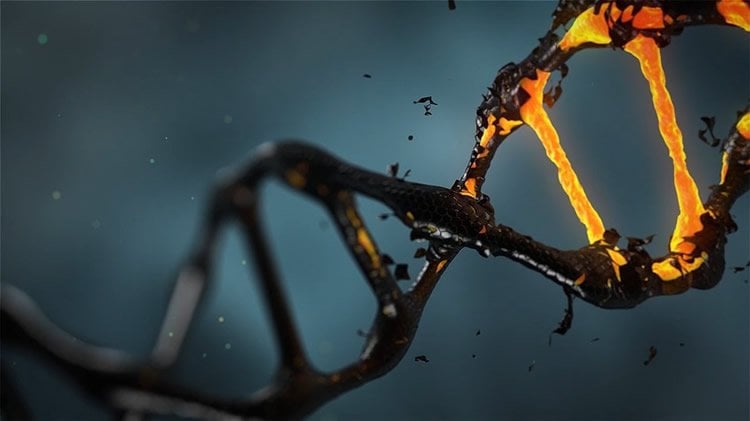Summary: Study finds a sex difference in a gene linked to substance abuse risk in adolescents.
Source: Georgetown University Medical Center.
In a study of adolescent boys and girls, neuroscientists at Georgetown University Medical Center and Penn State University have found a sex difference in a gene linked to substance use disorders.
To date, only adults have been studied for substance use disorders with regards to a particular genetic risk factor. Those studies found that a gene alteration that codes for the neurotransmitter dopamine was linked to an increased risk in men, but was inconclusive in women.
In a new study of adolescents, researchers found that the C variant (allele) in the dopamine receptor gene called DRD2, delayed maturation of a critical brain region involved in reward-related planning in boys, but not in girls. In girls, the opposite affect was found – the T allele of DRD2 delayed cortical maturation while conferring healthy development in boys.
“Our study shows that the what had previously been considered the risk allele did indeed delay development of the left superior temporal gyrus, but only in the adolescent boys. Strikingly, the opposite effect was found in the girls – the T allele delayed development in this region in the girls,” says senior author John VanMeter, PhD, an associate professor of neurology at GUMC.
The work is some of the first to look for genetic markers of risk in relation to adolescent brain development and how these factors relate to risk of future substance use disorders.
Understanding how a genetic marker confers risk is important for developing effective interventions aimed at mitigating this risk.
“Just knowing that a particular genotype confers risk does not by itself mean the child will develop a substance use issue nor does it provide enough information about what steps can be taken to help the individual child avoid future problems with substances,” says the study’s lead author, Rachel Schroeder, a research assistant in GUMC’s Center for Functional and Molecular Imaging, led by VanMeter.
The first phase of this study, which includes 101 adolescents who have not started to drink alcohol, looked at genotype (via saliva samples) and gray matter volume in the brain (via high-resolution MRI), and examined a key behavioral measure of reward sensitivity.
Importantly, the authors also found the same effect when examining the ability of the children to wait for a reward. When they are asked questions to determine how far in the future they are willing to wait for a larger monetary reward versus an immediate smaller reward, both the boys with the C allele and the girls with the T allele prefer the immediate reward.

“A determination of predisposing factors that contribute to reward seeking may eventually help us to identify novel targets for intervention to ensure this tendency does not result in drug taking and other high risk behaviors,” said Diana Fishbein, PhD, professor of human development and family studies at Penn State and co-principal investigator of the study.
“This study also points out the need to study sex differences. We would almost certainly have missed these findings altogether if we had combined the sexes,” Schroeder said.
Funding: The findings of the study will be presented at Neuroscience 2017, the Society for Neuroscience’s annual meeting in Washington D.C., Nov. 11-15.
This work is a part of the ongoing Adolescent Development Study. Funding for this work is provided by the National Institute on Alcohol Abuse and Alcoholism at the National Institutes of Health (R01AA019983-01 and 3R01AA019983-02S1).
In addition to Schroeder, VanMeter and Fishbein, study authors include Benson W. Stevens, PhD, and Valerie Darcey, PhD, of Georgetown and Emma J. Rose, PhD, of The Pennsylvania State University.
Source: Karen Teber – Georgetown University Medical Center
Publisher: Organized by NeuroscienceNews.com.
Image Source: NeuroscienceNews.com image is in the public domain.
Original Research: The findings will be presented at Neuroscience 2017.
[cbtabs][cbtab title=”MLA”]Georgetown University Medical Center “Impact of a Genetic Risk Factor For Substance Use Differs By Sex in Adolescents.” NeuroscienceNews. NeuroscienceNews, 13 November 2017.
<https://neurosciencenews.com/genetics-sex-addiction-7935/>.[/cbtab][cbtab title=”APA”]Georgetown University Medical Center (2017, November 13). Impact of a Genetic Risk Factor For Substance Use Differs By Sex in Adolescents. NeuroscienceNews. Retrieved November 13, 2017 from https://neurosciencenews.com/genetics-sex-addiction-7935/[/cbtab][cbtab title=”Chicago”]Georgetown University Medical Center “Impact of a Genetic Risk Factor For Substance Use Differs By Sex in Adolescents.” https://neurosciencenews.com/genetics-sex-addiction-7935/ (accessed November 13, 2017).[/cbtab][/cbtabs]






